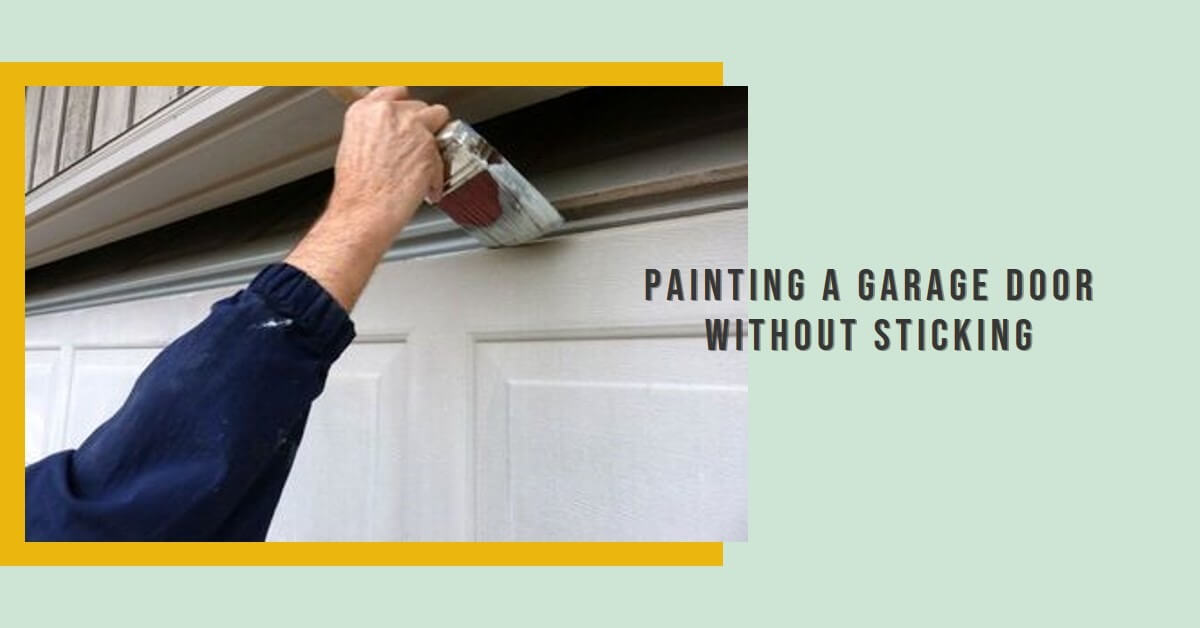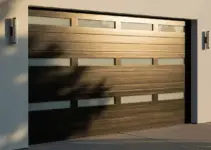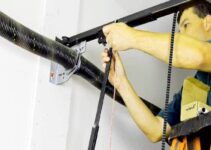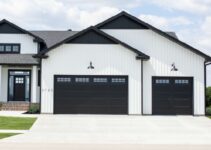Painting your garage door can be a great way to enhance its appearance and protect it from the elements.
One common issue that many people face is the paint sticking or peeling, which can ruin the overall finish.
In this article, we will provide you with a step-by-step guide on how to paint a garage door without sticking, ensuring a smooth and long-lasting finish.
Understanding the Problem
Common Issues with Painting Garage Doors
When it comes to painting garage doors, there are a few common issues that you may encounter. These include paint peeling, chipping, or sticking.
These problems can occur due to improper surface preparation, low-quality paint, or incorrect application techniques.
Why You Should Avoid Sticking
Sticking paint not only affects the appearance of your garage door but also reduces its durability. A sticky surface can attract dirt and debris, making it difficult to clean and maintain.
Sticking paint can cause the door to jam or become difficult to open and close.
Preparing the Garage Door
Before you start painting, it’s crucial to prepare the garage door properly. Follow these steps to ensure a clean and smooth surface:

Cleaning and Removing Old Paint
Begin by cleaning the garage door thoroughly. Use a mild detergent and water solution to remove dirt, grease, and grime.
If there is existing peeling or flaking paint, use a scraper or wire brush to remove it. Sand the surface lightly to create a smooth base for the new paint.
Sanding and Smoothing the Surface
Next, use sandpaper or a sanding block to smooth any rough areas on the garage door. Sanding helps the new paint adhere better and ensures a more even finish.
Remove any dust or debris from the surface after sanding.
Applying Primer
To improve paint adhesion and create a solid base, apply a coat of primer. Choose a primer that is suitable for exterior surfaces and compatible with the type of paint you will be using.
Allow the primer to dry completely before moving on to the next step.
Choosing the Right Paint
Selecting the right paint for your garage door is essential for a successful and long-lasting finish. Consider the following factors when choosing paint:
Selecting Exterior Paint
Opt for a high-quality exterior paint that is specifically formulated for outdoor use. Look for paints that offer durability, weather resistance, and UV protection.
These features will ensure that your garage door remains vibrant and protected for years to come.
Opting for a Durable Finish
Choose a paint finish that suits your preferences and the style of your home. Satin, semi-gloss, or gloss finishes are commonly used for garage doors as they provide better resistance against dirt, moisture, and fading.
Tools and Equipment
To paint your garage door efficiently, gather the necessary tools and equipment:
Brushes, Rollers, or Sprayers
Decide whether you want to use brushes, rollers, or a paint sprayer for the application.
Brushes are ideal for smaller areas and intricate details, while rollers and sprayers offer faster coverage for larger surfaces.
Choose the option that suits your skills and preferences.
Drop Cloths and Tape
Cover the surrounding areas with drop cloths to protect them from paint splatters. Use painter’s tape to mask off any sections you don’t want to paint, such as windows or hardware.
Painting Techniques
Now that you’re ready to paint, follow these techniques to achieve a smooth and professional-looking finish:
Starting with the Edges
Begin by painting the edges of the garage door using a brush or a smaller roller. Pay attention to corners and crevices, ensuring even coverage.
Applying the Base Coat
Next, apply the base coat to the larger sections of the door using a roller or sprayer. Work in small sections, moving from top to bottom, and maintain a wet edge to prevent lap marks.
Adding Additional Coats
Allow the base coat to dry as per the manufacturer’s instructions. If necessary, apply additional coats for better coverage. Follow the recommended drying times between coats.
Avoiding Sticking
To prevent paint from sticking and ensure a smooth finish, follow these tips:
Proper Drying Time
Allow the paint to dry thoroughly between coats and before closing the garage door. Rushing the drying process can lead to sticking or smudging.
Using Lubricants
Apply a thin layer of lubricant, such as silicone spray or WD-40, to the moving parts of the garage door after the paint has fully cured. This will prevent sticking and help the door operate smoothly.
Regular Maintenance
Perform regular maintenance on your garage door, including cleaning and lubrication, to keep it in optimal condition.
This will help prolong the life of the paint and prevent sticking issues in the future.
Cleaning Up and Final Touches
After you’ve finished painting, follow these steps to clean up and add final touches:
Removing Paint Spills
If you have any paint spills or splatters, clean them up immediately using a damp cloth or appropriate paint remover.
Be careful not to damage the painted surface while cleaning.
Reinstalling Hardware
Once the paint has dried completely, reinstall any hardware that was removed before painting. Ensure that everything is securely in place.
Conclusion
Painting garage door without sticking is a task that requires careful preparation, proper techniques, and the right materials.
By following the steps outlined in this article, you can achieve a professional-looking finish that enhances the curb appeal of your home while avoiding common issues like paint sticking or peeling.


